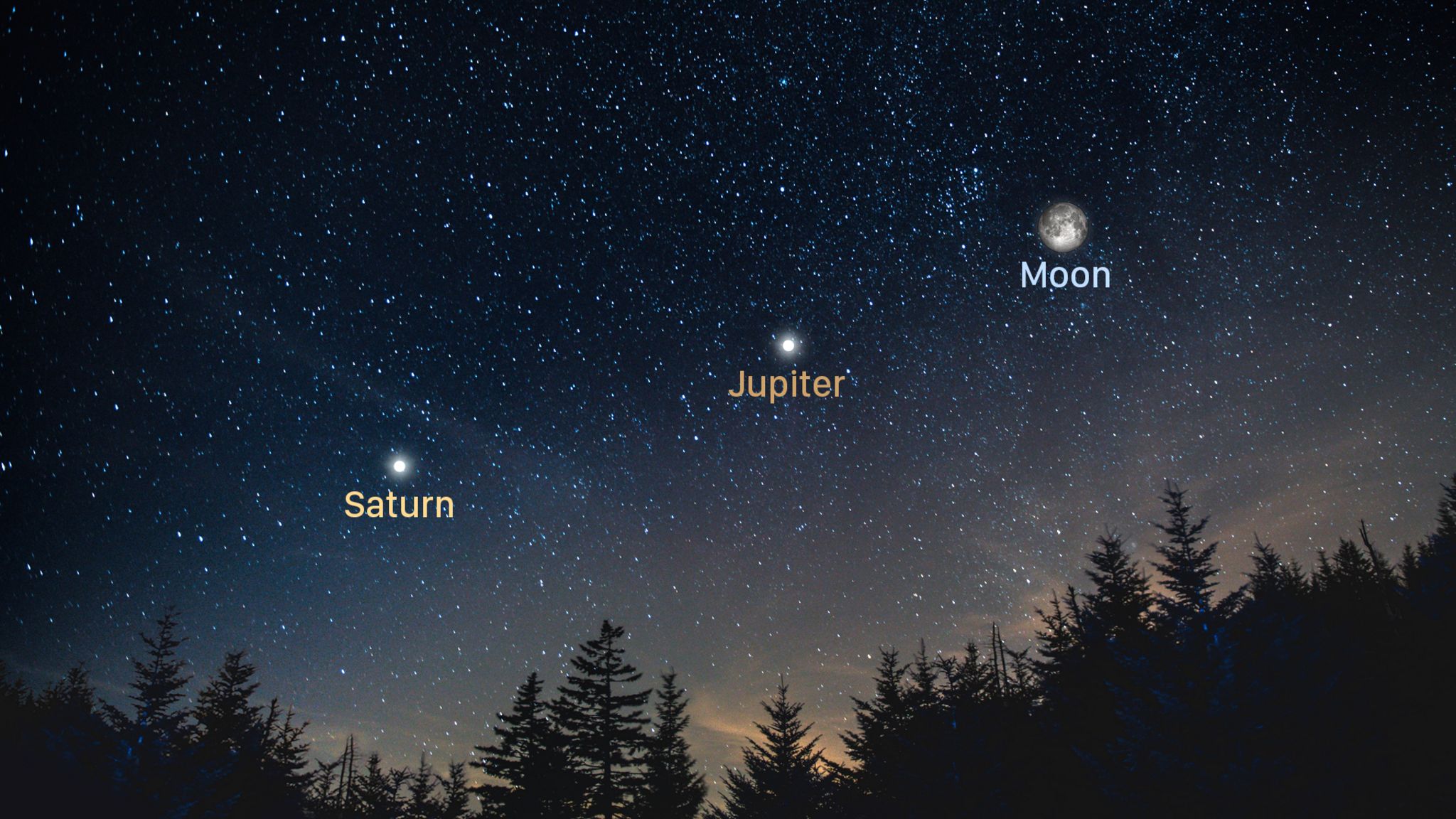The Sky This Week
Jupiter dominates our night skies this week, worldwide. But there are also other objects to observe in the sky. Here are the Skylights!
On June 10 we witnessed Jupiter’s opposition. The planet now shines at its brightest (visual magnitude -2.6) for 2019, and its apparent disk diameter maxes out at 46 arc-seconds. (That’s 2.5% of the full moon’s diameter.) Jupiter will be about as good for a week, and then it will slowly start to shrink in size and brightness. We’ll be enjoying Jupiter through our telescopes all summer long!
Around opposition, Jupiter’ moons are more visible, too. From time to time, the small, round black shadows cast by Jupiter’s four Galilean moons become visible in amateur telescopes as they cross (or transit) Jupiter’s disk. Starting late on Tuesday evening, observers in the Americas can see two of those shadows on Jupiter at the same time! At 11:29 pm EDT, Ganymede’s shadow will join Io’s shadow already in transit. The two shadows will cross Jupiter for 64 minutes until Io’s shadow moves off the planet at 12:33 am. Ganymede’s shadow will continue to transit the northern polar region of Jupiter until 1:50 am EDT.
Yellowish Saturn will be rising in the east-southeast a little before 11 pm local time this week. Its position in the sky is just to the left (east) of the stars that form the teapot-shaped constellation of Sagittarius (the Archer). Saturn is quite a bit dimmer than Jupiter. To find it, look about 2.5 fist diameters to the lower left (east) of Jupiter. Dust off your telescope - because even a small one will show its rings and several of its brighter moons!
Distant and dim, blue Neptune is in the southeastern pre-dawn sky, among the stars of Aquarius (the Water-Bearer). The planet will rise before 2 am local time. After mid-June, Neptune will become part of the evening sky. Brighter, blue-green Uranus is rising at about 3 am local time, and is sitting among the stars of Aries (the Ram).
Last to rise is our bright, next-door neighbour Venus. She is sitting low in the east-northeastern pre-dawn sky this week, creeping ever-closer to the rising sun. Venus will shine with a steady, unmoving light - unlike airplanes.
Mars and Mercury are hanging out just above the northwestern horizon after sunset this week. Mercury will become easier to spot every night because it is climbing away from the sun and brightening. The best time to look for it falls between 9:45 and 10:15 pm local time. Mercury is heading directly towards dimmer Mars. Next week, those two planets will “kiss”!
Use our Star Walk 2 app to identify any object in the sky, find out the exact time of the celestial event for your location, and to stay up to date with the latest astronomy news.
Happy hunting!
